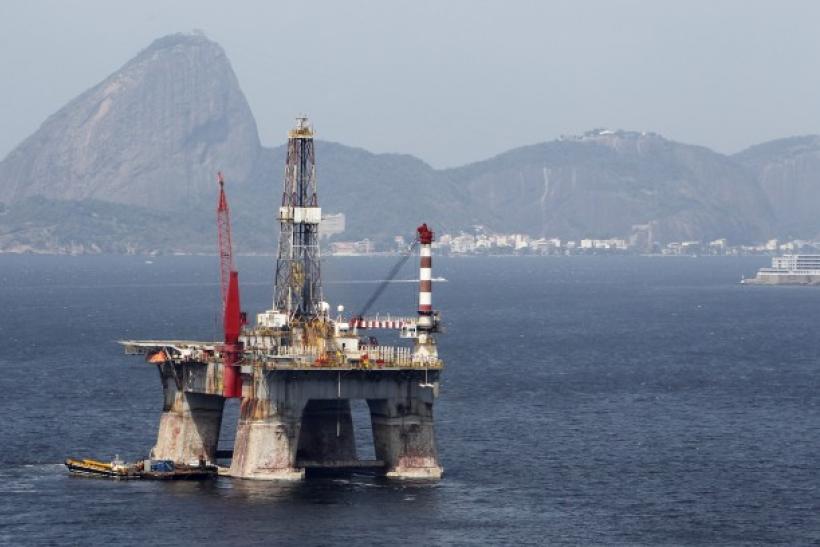RIO DE JANEIRO, BRAZIL – Brazil’s massive offshore oil boom, notably in the deepwater offshore pre-salt oilfields, is continuing to grow despite weaker oil prices and the sharp impact of the COVID-19 pandemic.
Strong demand from Asian refiners, especially those in China, for lighter sweet crude oils saw demand for Brazilian crude oil soar since late 2019.
The Covid-19 pandemic, a second round of lockdowns among Europe’s largest economies, a rapidly decelerating world economy, and a poor global economic outlook, have done little to curb China’s insatiable thirst for crude oil.

Data shows China’s crude oil imports for the first ten months of 2020 expanded by almost 11% year over year to an equivalent of 11 million barrels per day. Brazil has emerged as a key supplier of crude oil to the world’s second-largest economy.
This can be attributed to the introduction of regulation IMO 2020 in January which significantly reduces the sulfur content of maritime fuels and is a key driver of growing Asian demand for Brazil’s sweet crude oil.
The global push to reduce emissions means that demand for lighter sweeter low-sulfur-content crude oil grades, which are cheaper and easier to refine, will keep growing.
Latin America’s largest economy is now the third-largest supplier of petroleum to China compared to being ranked fifth in 2019. There are fears that the latest news from Brazil’s national oil company Petrobras could derail Brazil’s offshore oil boom.
The integrated energy major recently announced its Strategic Plan 2021-2025 where it flagged a sharp 27% cut in spending compared to a year ago, to US$55 billion (R$275 billion). This, according to Petrobras, is due to the impact of the Covid-19 pandemic on demand for crude oil and derivative products leading to sharply weaker oil prices.
While this triggered some consternation on how it will impact Brazil’s growing offshore oil boom, the fallout should be minimal. Petrobras stated that it intends to spend US$46 billion, or almost 84% of the planned capital expenditures budget, on exploration and production with a focus on its pre-salt oil assets.
It is Brazil’s vast deep-water pre-salt oilfields that produce the sweet medium grade crude oils that have become so popular in China and are gaining greater market share in other parts of Asia.
The reasons for this are twofold: first, the sulfur content of the crude oil produced in the Lula and Búzios offshore fields is only 0.27% and 0.31% respectively, well below the new maximum of 0.5%. This makes them particularly attractive to refiners in a world where stricter emission and sulfur content regulations are being enacted.
The introduction, in January 2020, of a new regulation by the International Maritime Organization (called IMO 2020) that reduced the maximum sulfur content of fuel used in maritime shipping to 0.5%, has been the primary reason for the surge in demand for sweet Brazilian crude blends among Asian refiners, in a region that is a global shipping hub. That significant upturn in demand for sweeter crude oil saw Brazil’s Lula and Búzios field blends trade at premiums to the international Brent crude il price.
Second, Brazil’s pre-salt oilfields have low breakeven costs, estimated by the Natural Resource consultancy to average around US$45.50 per barrel, while Petrobras pegs the breakeven price of its pre-salt operations at US$21 a barrel, meaning they are highly profitable even in the current difficult operating environment where Brent crude is selling at less than US$50 per barrel.
Petrobras announced it is only investing in those projects which are resilient to Brent at US$35 a barrel. While the US$46 billion earmarked for exploration and production spending is less than the US$64 million allocated in the previous plan, the focus on low-cost pre-salt production will drive increased higher-margin light sweet crude oil production.
Petrobras is making a series of moves to ensure this occurs. The company is ramping up activity in the Búzios field in response to the strong demand for that crude oil variety. It plans to bring another 8 FPSOs online by the end of the decade, giving Búzios 12 operational platforms to see the field pumping over 2 million barrels daily: more than triple the current output of around 600,000 barrels.
Petrobras also, at a cost of US$353 million, redeployed the 150,000-barrel daily capacity P-71 floating production storage and offloading platform (FPSO) from the Tupi oilfield to the recently discovered Itapu field. Petrobras expects that will allow production to commence next year, two years ahead of the original 2024 schedule.
Despite sales of some assets, a sharp reduction in spending, and the shuttering of uneconomic operations, Petrobras’ pre-salt oil output surged 32% year-over-year for the first nine months of 2020, to almost 1.6 million barrels daily.
As a result, total hydrocarbon production for the period grew by 7.6% to a daily average of 2.9 million barrels of oil equivalent.
Brazil’s state-controlled oil company is the primary driver of pre-salt operations in Latin America’s largest economy, being responsible for over 60% of the country’s pre-salt oil output and 77% of total oil production.
The latest strategic plan confirms Petrobras’ central role in developing Brazil’s bountiful pre-salt oil reserves and will ensure that the country’s economically crucial oil production keeps expanding.
This will ensure that Brazil’s oil boom continues to grow, seeing Latin America’s largest economy become the world’s leading offshore petroleum domain.

